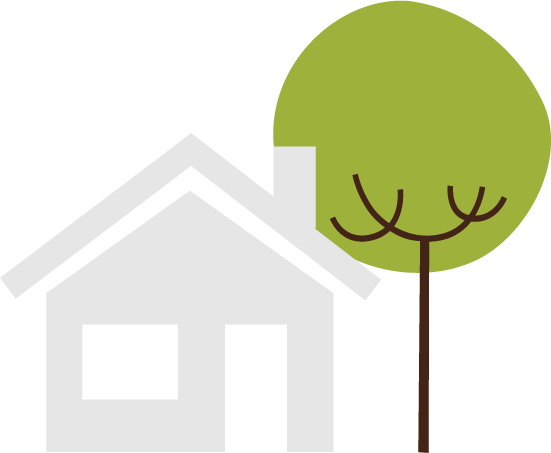The Oak processionary moth (OPM) is a destructive pest that can cause significant damage to trees, particularly oaks. The caterpillars of the OPM feed on leaves, which can lead to defoliation and weaken the tree's overall health.
Oak Processionary Moth (OPM).
Oak processionary moth (OPM) is a defoliating pest that poses a threat to oak trees in the UK. These caterpillars are covered in toxic and irritating hairs that can cause skin irritation and respiratory distress in humans. OPM infestations were first identified in London in 2006 and have since spread to other parts of the country. Effective control and management of OPM populations are critical to preventing further damage to oak trees and reducing the risk to public health. In this article, we will explore the life cycle of OPM, its impact on oak trees and human health, and strategies for controlling and managing OPM populations.
Oak Processionary Moths: A Threat to Human Health and Public Safety.
Oak processionary moths (OPM) are defoliating pests that target English, Sessile, and Turkey oaks, as well as other trees such as hornbeam, hazel, beech, sweet chestnut, and birch. In 2006, OPM infestations were first identified in London. These caterpillars represent a human health risk, unlike other tree-feeding caterpillars. The third to sixth instar caterpillars are covered in toxic and irritating hairs that can cause skin irritation (dermatitis) and allergic reactions (rashes, conjunctivitis). Inhalation of these hairs can cause respiratory distress such as asthma or anaphylaxis. Even if the larvae are not handled, the hairs can easily break off and disperse in air currents, making abandoned nests risky to handle. Since OPM is found in urban trees, forest edges, and amenity woodlands where the public often visits, concerns have been raised.
The life cycle and monitoring of Oak Processionary Moths in the UK
In the UK, OPM eggs are typically laid from July to early September, which overwinter on branches in a single layer, covered with greyish scales. The first instar larvae hatch in April, and branch inspections during the winter months are recommended to locate and mark egg masses for inspection from late March onwards. This practice can serve as indicators of hatch times and the appearance of the first stage larvae, which are the primary targets for insecticide applications. Oak processionary caterpillars are typically observed from April to June, with six stages during their life cycle. The larvae feed in groups and congregate in communal nests made of white silk webbing spun under branches or on trunks. When not feeding, the larvae follow one another head to tail in processions to and from the nest and from one feeding position to another. Adult moths can be observed from July until early September. They have a wingspan of around 30-32mm with grey forewings suffused with white and darker grey markings that provide excellent camouflage against the bark of oak trees. The use of pheromone traps, baited with the female sex attractant pheromone, can provide an indication of population size and distribution. However, since the moths are strong fliers, it is uncertain whether the distribution of captures in the traps accurately reflects the local distribution of the breeding population.
Surveying and Control of Oak Processionary Moths.
Surveying for the presence of OPM is a key criterion for control, but it is a time-consuming process that requires patience, experience in identifying OPM symptoms, and a good pair of binoculars. Symptoms to look for include skeletonised leaf feeding, clusters of larvae on shoots, the underside of scaffold branches and on stems, and nest formation during later instars. Nest removal is labor-intensive, time-consuming, and costly, although essential. Nevertheless, some nests are missed despite vigorous searching, leading to ineffective control. Nest removal is done either by MEWP or rope and harness, which exposes arborists to the health risks of OPM and the stress and fatigue of working in the summer heat in full personal protective equipment (PPE). Full PPE is required because exposure to the OPM toxin is sensitising, meaning that the greater the exposure, the greater the effect on human health. Nests should be removed before the moth pupates and flies from July to early September. Nest removal alone, however, is not an effective control option as some nests are bound to be missed, leading to re-infestation the following year.
Baldock, K. C. R., & Pye, A. J. (2021). Integrated management of oak processionary moth. Arboricultural Journal: The International Journal of Urban Forestry, 43(2), 73-87.
CABI. (2021). Oak processionary moth (Thaumetopoea processionea). Retrieved from https://www.cabi.org/isc/datasheet/53093
Forestry Commission. (2021). Oak processionary moth. Retrieved from https://www.forestryengland.uk/oak-processionary-moth
Goulson, D., & Hughes, W. O. (2019). The Oak Processionary Moth: A Pest Species That Threatens the Health of Oak Trees and Humans in the UK. Annual Review of Entomology, 64, 1-20.
Hart, A. G., & Jiggins, F. M. (2020). Understanding the biology and management of the oak processionary moth. Forestry, 93(4), 429-441.
Talk to us about tree pests and diseases
If you have concerns about the management of trees affected by pests or any other issues related to tree care, we are here to help. Contact us today to discuss your needs and we will be happy to assist you with any questions or queries you may have. We offer a range of consultancy services which may be of use in the managment of your site or grounds.




